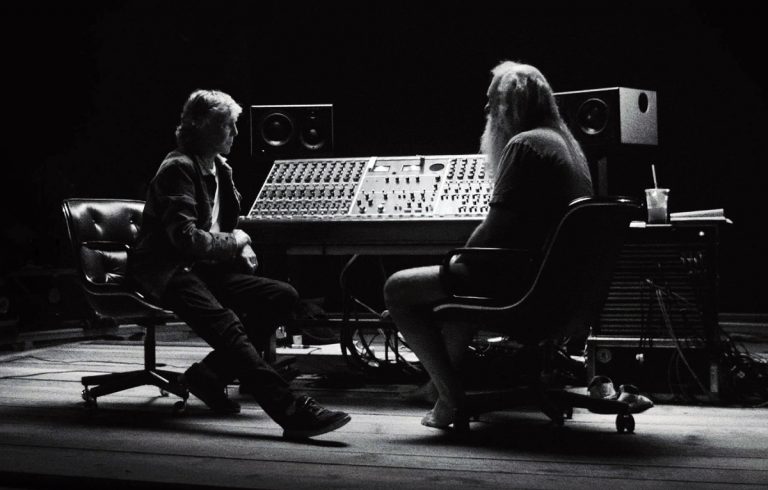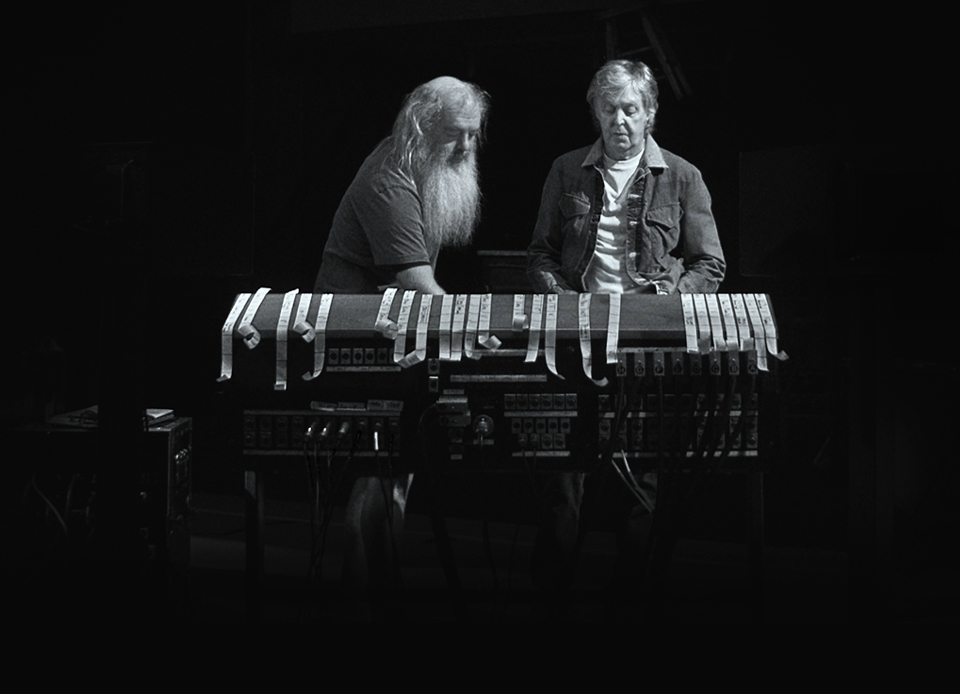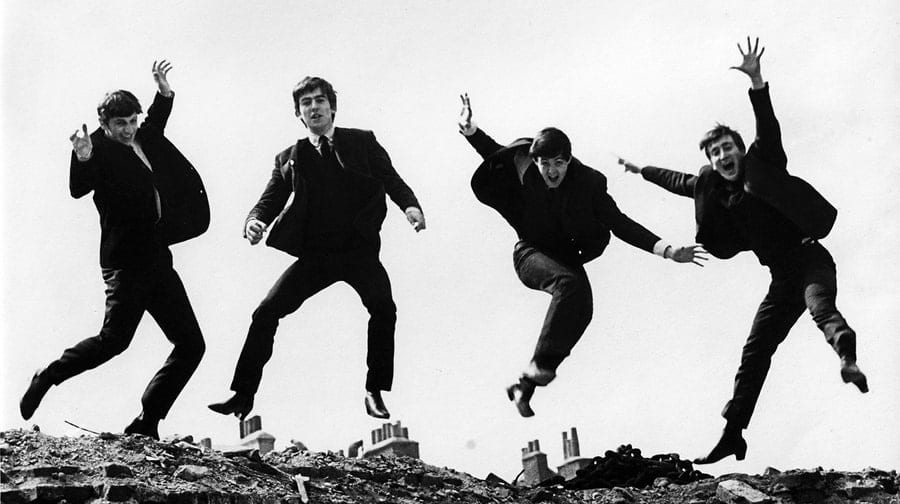
Those who are fond of The Fab Four are in for a treat with the miniseries McCartney 3, 2, 1 — the result of the collaboration between the former member of The Beatles, Sir Paul McCartney, and record producer Rick Rubin.
The six episodes, directed by Zachary Heinzerling, are a crossover between a documentary and a visual podcast that echoes Song Exploder — where musicians dissect their songs. It all takes place in a a recording studio, in front of a mixer, where McCartney and Rubin are intent on listening and analysing the English band’s greatest hits and recalling the circumstances that inspired them. The choice of black and white creates an evocative atmosphere for this spellbinding musical trip down memory lane.
The first episode — “These Things Bring You Together” — focuses on the beginnings of the Beatles, which started in Liverpool, “The Capital of Ireland” as Paul McCartney will eventually say. This is because of the intrinsic Celtic culture connected to the city. He also shares anecdotes about his teenage friendship with John Lennon and George Harrison, with whom he had the same passion for guitar, music and hitchhiking. Whilst, as everyone knows Ringo Starr, joined the group later, taking over the position from Pete Best.
McCartney explains how back in the day, with his band they “were writing memorable songs,” because there were no recording devices. Hence, they had to remember the music by heart and choose catchy tunes and lyrics. Many titles, and songs were simply born out of mundane occasions, like when John Lennon had to explain to his son that his mother had died and told him: “We Can Work It Out.” Other songs, like “Michelle,” were the outcome of sophisticated aspirations: the young musicians would wear black turtle necks when visiting John at his Art College, fascinated by the French allure of the people attending.
The second episode — “The Notes That Like Each Other” — unravels as an engaging scholarly analysis of music. What mesmerises is to discover that McCartney cannot read or write music, but “it’s all in the head.” His exquisite musical ear and sense of rhythm lead the way through the mathematical permutation of chords. The success of The Beatles was further determined by the introduction of diverse musical genres, thanks to the influence of their historical producer, George Martin. Paul, after listening to Bach’s Brandenburg Concerto was impressed by a high pitched C, that Martin identified as being played by a Piccolo Trumpet. That is how this instrument was introduced in “Penny Lane,” played by none other than classical musician David Mason.

In the third episode — “The People We Loved Were Loving Us”— McCartney delves into the feeling of acceptance from fans all over the world. He describes the stairway to stardom he had with the band, that prepared them to becoming public figures; as opposed to what happens today with talent-shows where youngsters are thrust into fame out of the blue. McCartney retraces the great camaraderie he experienced hanging out with artists. Being around friends of that ilk prompted him and his music-pals to coalesce the literary world with daily routine. The topical example is when Julian Lennon drew a picture of his school mate, Lucy, floating in the sky surrounded by stars that he would call diamonds.
The Beatles were incredibly fond of Lewis Carroll, so it was an organic process to envision the kaleidoscope eyes of their “Lucy In The Sky With Diamonds.” Those were also the days when Transcendental Meditation would enter the life of the British band, after a trip to Rishikesh in Northern India, to take a training course at the Ashram of Maharishi Mahesh Yogi. This experience would eventually develop Harrison’s interest in Indian music, to the point that he called his son Dhani, after the sixth and seventh notes of the Indian music scale, dha and ni.
The fourth episode — “Like Professors In A Laboratory” — opens up to youth’s hungry quest for knowledge, as The Beatles kept experimenting with style and sound. “Maxwell’s Silver Hammer” is the representation of this phase, with the use of a Moog synthesiser and and an anvil. Another anecdote that enlightens this musical pursuit is how “Sgt. Pepper’s Lonely Hearts Club Band” contains a sound that only dogs can hear. That is why canine heads turn every time that song plays! But the music-laboratory experiments can be found also in the use of backwards and superimposed noises that characterised Abbey Road Studios, a temple of music where the utmost innovative recording techniques were adopted throughout the Sixties. It doesn’t surprise that this is where Pink Floyd recorded “The Dark Side of The Moon.”

The fifth episode — “Couldn’t You Play it Straighter?” — is an ode to being different. The Liverpool misfits had to fight their way through all those who told them that they would have never made it, which only strengthened their resolve to succeed. McCartney wrote his first song when he was only fourteen years old, “I Lost My Little Girl,” and many others would have followed with his band players. The rest is history. In terms of musical genius, it is Rick Rubin that points it out, when discussing the bass line of “Something”; the song written and performed by George Harrison, played by McCartney himself, which always remains of a disarming beauty. Also the inception of “Come Together” is fascinating, because it initially sounded as a rockabilly song like “You Can’t Catch Me” by Chuck Berry. During the conversation with Rick Rubin, McCartney recalls also the time of The Beatles’ break-up when he retired to a farm in Scotland and slowly reconnected with music by recording tracks with his own equipment.
The sixth and final episode — “The Long and Winding Road” — named after the eponymous song of The Fab Four, marks the natural continuation to the previous episode. In fact, Paul McCartney said he came up with this title during one of his first visits to his property High Park Farm, near Campbeltown in the remote Highlands surroundings of lochs and distant mountains. He actually wrote the song at his farm in 1968, inspired by the growing tension among his band members. The Amardcord-like narrative traverses a conclusive rundown of the way McCartney was influenced by the Bardic tradition of Liverpool, for his compositions. “Yesterday” just came to him, he wrote it without a conscious effort involved, simply by waking up with the tune in his head. Whilst many others, from “Here, There and Everywhere,” to “A Day In The Life,” are the fruit of the band being exposed to avant-garde music. By the end of the conversation with Rick Rubin, Sir Paul McCartney turns out to be a true fan of The Beatles, even if life’s circumstances lead them on different paths.
The series was digitally released in the US via Hulu on July 16, and is now available on Disney+ in Europe.

